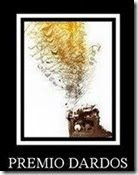
Around mid-November, authorities in Namibia were alerted to the discovery of a hollow sphere that had apparently crashed to Earth from space.
Eyewitnesses reported hearing a series of explosions a few days before the extraterrestrial find. The "space ball" was consequently recovered near a village in the north of the African nation, 480 miles from the capital Windhoek.
The mystery sphere has a diameter of 35 centimeters (14 inches), a rough surface and appears to consist of "two halves welded together," police forensics director Paul Ludik told the AFP news agency.
SCIENCE CHANNEL: Strangest Things in Space
Ludik also described the object as being made of a "metal alloy known to man," weighing in at six kilograms (13 pounds). "It is not an explosive device, but rather hollow, but we had to investigate all this first," he added.
Baffled, the Namibian police have appealed to NASA and the European Space Agency for an explanation.
So what could it be? Assuming it does originate from space, is it a component from a top secret space weapon? Space hopper? Or could the explanation be a little more... alien?
Sadly, we won't be seeing the Men In Black flying to Windhoek any time soon. This hollow sphere will immediately strike a chord with any space expert.
Exhibit A looks like a dusty "Composite Overwrapped Pressure Vessel" (or COPV for short) and although it did drop from orbit, it's simply an exotic-looking chunk of space junk.
ANALYSIS: Space Junk Problem Reaches 'Tipping Point'
COPVs have a variety of space applications, but they all provide the same function -- they store gases under pressure in a space environment.
What's more, to maintain the high pressure within the COPV, they are made of very tough material, often wrapped in carbon fiber or Kevlar. This is why COPVs can remain intact on reentry.
Similar spheres have been discovered in other locations around the planet. In 2008, for example, I reported on the discovery of a COPV in Brazilian farmland. That object too ignited awe and mystery. Right around the same time, a farmer from Australia went public on his 2007 find -- another bashed-up COPV in the Aussie Outback.
ANALYSIS: Solar Activity Spells Doom for NASA Satellite
Earlier this year, the severe Texas drought revealed space debris at the bottom of a lake -- a fuel tank from Space Shuttle Columbia. The shuttle broke up on reentry in 2003, killing all seven astronauts on board. Debris from the disaster rained down on the state, including the shuttle's COPVs.
So what of the Namibian find? It seems likely that this well-preserved COPV could have originated from any space mission that requires the use of COPVs, so we'll have to wait and see what NASA or the ESA says about which spacecraft it came from.
Image credit: National Forensic Science Institute















No hay comentarios:
Publicar un comentario